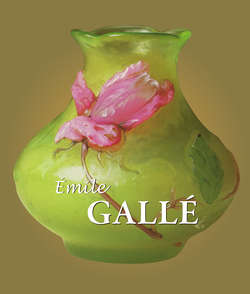Читать книгу Émile Gallé - Émile Gallé - Страница 8
На сайте Литреса книга снята с продажи.
Lover of Nature
L’École de Nancy in Paris
ОглавлениеPreface to the catalogue of the Exhibition of Decorative Arts, Lorraine, opened in the Pavilion of Marsan from 1 March – 1 April 1903. This preface was reproduced by the Lorraine-Artiste, dated 15 March 1903.
The name École de Nancy was used to describe the group of cultural industries of France and the trends that characterise them.
More specifically, it is an association of private initiative, a provincial alliance of arts and crafts. It has its headquarters in Nancy and proposes to develop the prosperity of industries of manual arts in Lorraine. As soon as its resources permit it, the École de Nancy intends to give vocational education courses and classes for the direct application to all trades akin to drawing.
It opened study conferences, exhibitions of works of art. It is now waiting for the means to create a special museum in Nancy dedicated to its works, its education of art workers and the public, a kind of conservatory of its workmanship, of its models, of its tradition.
The École de Nancy, in fact – and this is what distinguishes it from the groups which fortunately are usually more or less cohesive art salons – claims to have, and have put into practice, some of the principles that are unique to it. It has carefully formulated them, although it leaves to its members an absolute independence for individual applications.
There still remain, however, between these artists, not to mention the Lorraine family resemblance, enough links to make their group exhibition attempt an interesting one. First of all, they rely on the higher principle of the unity of art, as painters such as Prouvé meet there with industrialists, and Prouvé himself practices both great humanitarian murals, vibrant, passionate statuary, and art trinkets. They all also relate to a more or less strong and safe aesthetic, the demonstration of which has been revealed early in Nancy, and practiced with some success for a quarter of a century.
Young people have experienced in their turn all the practical value and are readily attached to a free action, to a rational mode of design and to designer’s formulas that come from the same method of composition. This is, moreover, a national heritage in our country, above all, fond of clarity, of logic, of logical construction indeed, healthy, stable, taking into account the specific qualities of each of the materials used, and a clear and well-defined destination, in view of convenience and a perfect duration.
But the most important point is that the solid framework of its furniture, the architecture of the vessel, and their precise destination, Nancy claimed to clothe them their own way with a personal ornamentation. Suddenly abandoning to enjoy in peace the benefits of imitation, our designers, our potters, glassmakers, enamellers, cabinetmakers, goldsmiths, skinners, inlayers, Lorraine sculptors, have successively, over thirty years, moved away willy-nilly of imitation of ancient styles with a new principle, the one of the scientific observation of live models.
One therefore studied as both naturalists, as decorators, and industrial designer of colourful clothes which, in nature, envelop all beings because of a specific utility particular to each of them.
It was concluded for the benefit of our homes, with new effects, in harmony with the vast ambient coherence. Attractiveness of the plant has not stopped with the elegant stylisations that the late 19th century seemed to solely reap from nature to pay tribute to the formulas of the 16th century.
From Lorraine flora, we have realised applications for our trade. We have sought to deduce from nature the methods, the elements, and the specific characteristics to create a modern decoration style, a coloured coating of plastic objects and their modern uses.
We certainly do not claim to have succeeded, but at least we will have tried to demonstrate, by this time of confusion, the principles that distinguish other recent attempts from our logical French style directly inspired by natural materials.
This mode, according to common sense, to tradition and nature has significant advantages. It makes available to the ornaments composer, to the art worker, the key to these free museums of living decor, flora, wildlife confiscated by the academies. Instead of laboriously referring to older models that are often only copies of copies, alterations of brilliant adaptations made by the old masters from natural varieties, art modeller goes right to the real and vivid acanthus, or returns to the dandelion of popular images of the 14th century.
Конец ознакомительного фрагмента. Купить книгу
